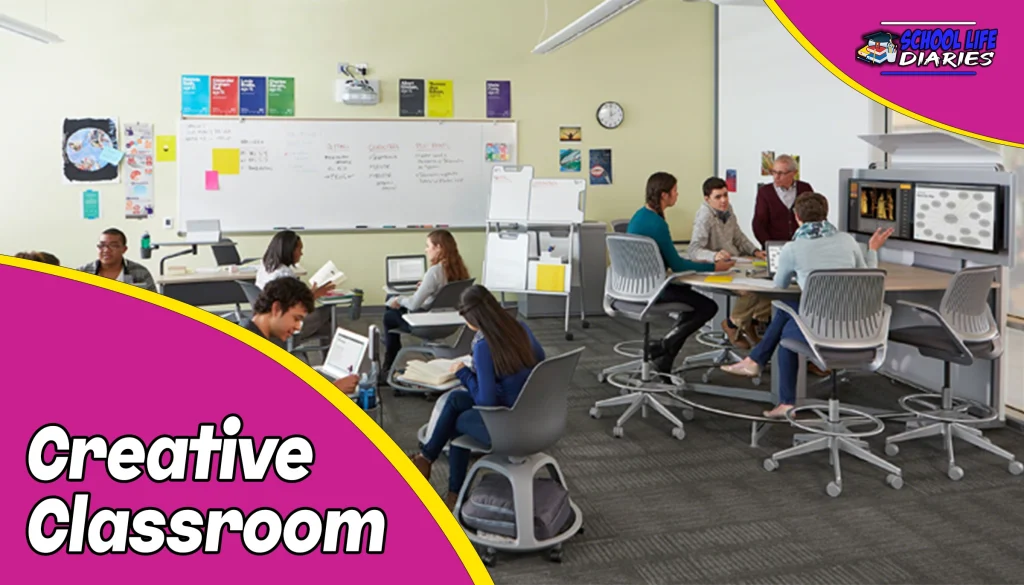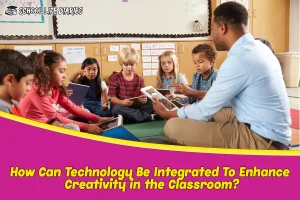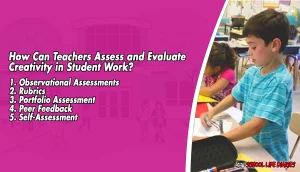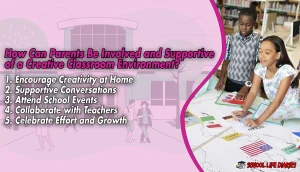Welcome to our comprehensive guide on creating a creative classroom environment that fosters imagination, innovation, and critical thinking. In this article, we will explore the importance of creativity in the classroom, how technology can be integrated to enhance creativity, the role of collaboration and teamwork, steps to building a creative classroom, how teachers can assess and evaluate creativity in student work, and how parents can support and be involved in a creative classroom environment. So, let’s dive in and discover the key tips and ideas to promote creativity in the classroom.
Why is Creativity in the Classroom Important?
Creativity is a fundamental skill that empowers students to think outside the box, solve problems creatively, and express themselves in unique ways. By fostering creativity in the classroom, students develop essential skills such as critical thinking, communication, and adaptability. Additionally, creativity enhances motivation and engagement, making the learning experience more enjoyable and effective.
How Can Technology Be Integrated To Enhance Creativity in the Classroom?
Technology offers a myriad of opportunities to enhance creativity in the classroom. By incorporating digital tools, students can explore various forms of media, collaborate on creative projects, and showcase their work to a wider audience. For instance, using multimedia presentation software allows students to combine text, images, videos, and audio to create engaging and interactive presentations. Virtual reality (VR) can provide immersive experiences, allowing students to explore different environments and spark their imagination.
What Role Do Collaboration and Teamwork Play in a Creative Classroom?
Collaboration and teamwork are essential components of a creative classroom. When students work together in groups, they can exchange ideas, share perspectives, and collectively solve problems. Collaborative projects promote creativity by encouraging students to think collectively, negotiate differences, and create something unique as a team. Moreover, working collaboratively helps students develop crucial social and communication skills that are valuable in real-world scenarios.
Steps To Building A Creative Classroom
1. Choose a flexible classroom layout:
A flexible classroom layout is essential for promoting creativity. Arrange furniture in a way that allows for easy movement and interaction. Consider creating different learning zones within the classroom, such as a reading nook, a collaborative workspace, and an area for hands-on activities. A flexible layout provides students with the freedom to choose the environment that best suits their creative needs.
2. Follow a classroom theme:
Introducing a theme in your classroom can ignite students’ imagination and create a cohesive learning experience. Choose a theme that aligns with your curriculum or interests your students. Decorate the classroom accordingly, incorporating relevant visuals, posters, and props. A themed classroom creates an immersive environment that inspires creativity.
3. Create a classroom library:
A well-stocked classroom library is a valuable resource for nurturing creativity. Fill it with a diverse range of books, magazines, and other reading materials that cater to different interests and reading levels.
Encourage students to explore the library, choose books that pique their curiosity, and engage in independent reading. Reading stimulates the imagination and sparks creative thinking.
4. Visualize ideas and goals:
Visual aids such as charts, posters, and mind maps can help students visualize their ideas and goals. Provide ample space for students to display their work and creative projects. Encourage them to create vision boards or use digital tools to visually represent their aspirations. Visualizing ideas and goals allows students to better understand and refine their creative visions.
5. Create opportunities for reflection:
Reflection is a crucial aspect of the creative process. Designate time for students to reflect on their work, experiences, and challenges. Encourage them to keep journals or create digital portfolios where they can document their thoughts, insights, and progress. Reflection promotes self-awareness, critical thinking, and the ability to learn from mistakes.
6. Model Creativity:
Teachers play a vital role in fostering creativity by modeling it themselves. Demonstrate creative thinking through your lesson plans, projects, and problem-solving activities. Show enthusiasm for imaginative ideas and encourage risk-taking. When students witness their teachers embracing creativity, they feel empowered to explore their own imaginative potential.
7. Emphasize Process over Product:
In a creative classroom, it’s crucial to emphasize the process rather than focusing solely on the final product. Encourage students to experiment, take risks, and embrace failure as an opportunity for growth. By valuing the process, students learn to enjoy the journey of creating, rather than being solely focused on the end result.
8. Support Curiosity and Inquiry:
Nurturing curiosity and inquiry is essential for promoting creativity. Encourage students to ask questions, explore topics of interest, and pursue independent research. Provide opportunities for open-ended projects that allow students to delve deeper into subjects they are passionate about. Foster a classroom culture that values curiosity and rewards inquisitive thinking.
How Can Teachers Assess and Evaluate Creativity in Student Work?
Assessing and evaluating creativity requires a multifaceted approach that goes beyond traditional tests and exams. Teachers can consider various methods, such as:
1. Observational Assessments:
Observe students’ creative processes, including ideation, problem-solving, and collaboration.
2. Rubrics:
Develop rubrics that assess both the process and the product of creative work, considering criteria such as originality, risk-taking, and presentation.
3. Portfolio Assessment:
Have students maintain portfolios showcasing their creative projects, reflections, and growth over time.
4. Peer Feedback:
Encourage students to provide constructive feedback to their peers, promoting self-reflection and improvement.
5. Self-Assessment:
Involve students in evaluating their own creative work by setting goals, reflecting on their progress, and identifying areas for improvement.
How Can Parents Be Involved and Supportive of a Creative Classroom Environment?
Parents play a crucial role in supporting a creative classroom environment. Here are some ways parents can get involved:
1. Encourage Creativity at Home:
Provide opportunities for creative expression at home through art, music, storytelling, and imaginative play.
2. Supportive Conversations:
Engage in conversations with your child about their creative projects, interests, and ideas. Show genuine interest and provide encouragement.
3. Attend School Events:
Participate in school events that celebrate creativity, such as art exhibitions, talent shows, and science fairs.
4. Collaborate with Teachers:
Establish open communication with teachers to understand how you can support their efforts in promoting creativity.
5. Celebrate Effort and Growth:
Focus on praising your child’s efforts, progress, and resilience rather than solely on outcomes. Encourage them to take risks and embrace challenges.
FAQs:
Q: How can a creative classroom benefit students in the long run?
A: A creative classroom fosters skills that are highly valued in the modern world, such as critical thinking, problem-solving, innovation, and adaptability. These skills prepare students for future careers and enable them to navigate complex challenges with confidence.
Q: Are there any online resources available for creative classroom ideas?
A: Yes, there are numerous websites and online platforms dedicated to sharing creative classroom ideas. Websites like Pinterest, Edutopia, and Teachers Pay Teachers offer a wealth of resources, lesson plans, and inspiration for creating a creative learning environment.
Q: Can creativity be developed, or is it an innate talent?
A: While some individuals may have a natural inclination towards creativity, it is a skill that can be nurtured and developed in all students. Through proper guidance, encouragement, and exposure to diverse experiences, students can enhance their creative thinking abilities.
Q: What if a student struggles with creativity in the classroom?
A: Every student has unique strengths and interests. If a student is struggling with creativity, it’s essential to provide support and alternative approaches. Offer a variety of creative outlets, provide guidance, and encourage collaboration and brainstorming activities to help spark their imagination.
Q: How can technology support creativity without becoming a distraction?
A: Technology should be used purposefully and intentionally to enhance creativity rather than serving as a mere distraction. Clear guidelines and expectations can be set to ensure technology is used in meaningful ways, such as for research, collaborative projects, multimedia creation, and accessing creative tools and resources.
Q: Are there any grants or funding available for implementing creative classroom initiatives?
A: There are various grants and funding opportunities available for educators and schools interested in implementing creative classroom initiatives. Research local and national educational foundations, community organizations, and government programs that provide funding for innovative educational projects.
Conclusion:
Creating a creative classroom environment requires a holistic approach that considers the physical space, teaching strategies, collaboration, and support from both teachers and parents. By fostering creativity in the classroom, we empower students to become critical thinkers, problem solvers, and lifelong learners. So, let’s embrace the power of imagination and inspire the next generation of innovators and creators in our creative classrooms.








